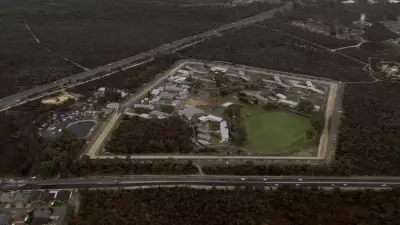
The Liberal Party is facing a critical challenge as it struggles to maintain support among climate-conscious voters while managing deep internal divisions over climate policy. Political analysis reveals the party risks alienating a growing segment of the electorate that prioritizes environmental action.
Growing Electoral Threat for Liberals
Recent political developments highlight the Liberal Party's continuing struggle to develop a credible climate policy that satisfies both its conservative base and the broader electorate. The party's internal divisions on climate action have become increasingly apparent, creating significant electoral vulnerabilities.
Political commentator Michelle Grattan's analysis points to a fundamental problem facing the opposition. Despite some efforts to address climate concerns, the Liberals have failed to present a unified front or comprehensive strategy that resonates with voters who rank climate change as a top priority.
Internal Divisions and Policy Challenges
The Liberal Party's climate policy difficulties stem from deep-seated internal conflicts between moderate and conservative factions. These divisions have hampered the development of coherent environmental policies that could appeal to the broader Australian public.
Under Peter Dutton's leadership, the party has taken positions that risk further alienating climate-conscious voters. The opposition's approach to emissions reduction targets and renewable energy transition has drawn criticism from environmental groups and concerned citizens alike.
The political landscape has shifted significantly in recent years, with climate change becoming a central issue for many Australian voters. This shift is particularly pronounced among younger demographics and educated urban constituents who were once part of the Liberal Party's traditional support base.
Electoral Consequences and Future Outlook
The failure to address climate concerns adequately has already shown electoral consequences for the Liberals. Several formerly safe seats have become marginal or been lost to candidates and parties offering stronger climate action policies.
Analysis of recent election results demonstrates that climate policy is increasingly influencing voting patterns across Australia. Voters who prioritize environmental action are showing willingness to switch their support to parties that demonstrate genuine commitment to addressing climate change.
The teal independents' success in the 2022 federal election serves as a stark warning to the Liberal Party. These candidates, who campaigned heavily on climate action and integrity, captured traditionally Liberal seats by appealing to voters dissatisfied with the party's environmental stance.
Looking ahead, the Liberals face the challenge of reconciling their internal divisions while developing climate policies that can win back the trust of alienated voters. Without meaningful progress on this front, the party risks continued erosion of its support base among climate-conscious Australians.
The political reality is clear: climate policy has become an electoral imperative rather than merely an environmental concern. How the Liberal Party navigates this challenge will significantly influence its prospects in future elections and its ability to form government.





